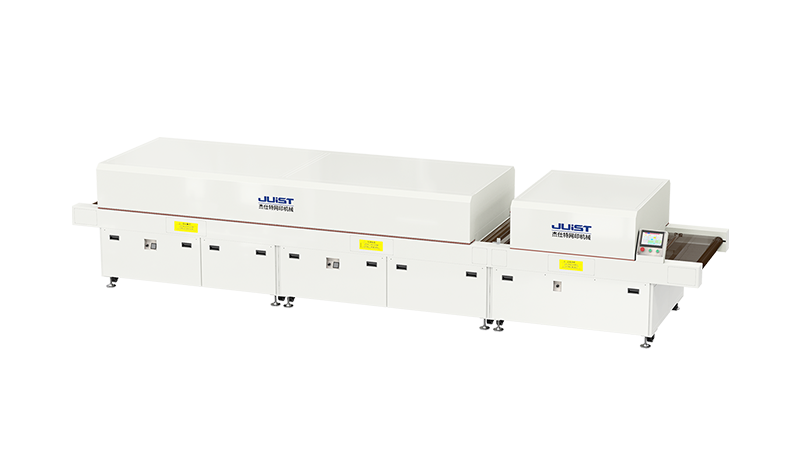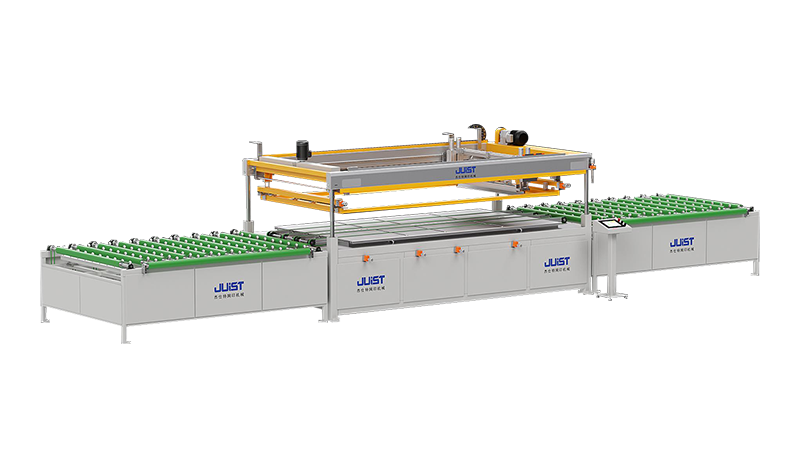+86-519-83387581
What Kind of Fast Drying Tunnel Oven Can Adapt to Different Processing Needs? Analyzing Its Core Value
In industries such as food processing, electronic manufacturing, plastic molding, and coating application, fast drying tunnel ovens are key equipment for achieving efficient material drying. Their characteristics of "continuous conveying + precise temperature control" can significantly shorten drying time and improve production efficiency. Unlike ordinary drying equipment, high-quality fast drying tunnel ovens can adjust tunnel length, temperature range, air speed, and conveying speed according to the drying needs of different materials (such as temperature tolerance, humidity requirements, and drying cycle), achieving a "customized on-demand" drying effect. Whether it is food materials that require low-temperature slow drying, electronic components sensitive to temperature, or coating layers that need rapid curing, fast drying tunnel ovens with strong adaptability can accurately match the needs, avoiding problems of over-drying or incomplete drying. Next, we will analyze the practical value of fast drying tunnel ovens from different application scenarios to help understand how they adapt to diverse processing needs.
Why Can Fast Drying Tunnel Ovens for Small-Batch Food Processing Balance Efficiency and Quality?
Small-batch food processing (such as nut roasting, fruit and vegetable dehydration, and snack drying) needs to ensure drying efficiency to control costs, while also strictly controlling temperature and humidity to avoid damaging food taste and nutrition. This type of fast drying tunnel oven achieves a balance between efficiency and quality through "flexible design". First, according to the characteristics of small-batch production, the conveyor belt width and tunnel length of the oven can be flexibly adjusted without occupying excessive production space. At the same time, it supports switching drying parameters for different materials in a short time, meeting the production needs of multiple varieties and small batches. Second, in terms of temperature control, the oven adopts zone temperature control technology, which can set gradient temperatures according to different stages of food drying (such as preheating, constant drying, and cooling). For example, when drying nuts, low-temperature preheating is first used to lock in moisture, then medium-temperature constant drying to remove excess moisture, avoiding nut scorching or nutrient loss caused by high temperatures. In addition, some tunnel ovens are also equipped with humidity monitoring and exhaust adjustment functions, which discharge moisture from the oven in real time to ensure uniform food drying and maintain a crispy taste. Compared with traditional batch drying equipment, fast drying tunnel ovens for small-batch food processing can shorten the drying time by more than 30% while ensuring food quality through precise temperature control, making them particularly suitable for small and medium-sized food processing plants.
How Do Energy-Saving Fast Drying Tunnel Ovens for Plastic Parts Balance Energy Saving and Drying Effect?
Plastic part drying (such as moisture removal for injection molded parts and shaping of plastic films) requires a certain temperature to remove moisture on the surface or inside the material. However, traditional tunnel ovens often increase production costs due to excessive energy consumption. Energy-saving fast drying tunnel ovens achieve a balance between energy saving and effect through "heat source optimization + heat cycle utilization". In terms of heat source selection, these tunnel ovens mostly use high-efficiency electric heating tubes or heat pump heating systems, with heat conversion efficiency 20%-30% higher than traditional resistance heating, reducing ineffective energy consumption. At the same time, the oven body uses high-density thermal insulation materials to reduce heat loss to the outside and ensure stable temperature inside the oven. In terms of heat cycle design, the tunnel oven is equipped with high-efficiency fans and guide plates, forming a closed-loop circulation of hot air inside the oven to avoid uneven local temperature. At the same time, the waste heat discharged is recovered to the preheating zone for heating newly entered cold air, further reducing energy consumption. In addition, the equipment can automatically adjust heating power and conveying speed according to the drying needs of plastic parts. For example, thin-walled plastic parts have a short drying time, so the heating power can be reduced and the conveying speed can be increased to avoid energy waste. Through these designs, energy-saving fast drying tunnel ovens can ensure thorough drying of plastic parts (moisture content can be controlled below 0.1%) while reducing energy consumption by more than 25% compared with traditional equipment, balancing drying effect and cost control.
How Is Temperature Control Precision Ensured in Temperature-Controlled Fast Drying Tunnel Ovens for Electronic Components?
Electronic components (such as capacitors, resistors, and chip packaging parts) have extremely high requirements for drying temperature precision. Excessive temperature deviation can lead to damage or failure of component performance. This type of fast drying tunnel oven ensures temperature stability through a "high-precision temperature control system". First, multiple sets of high-precision temperature sensors (with a precision of up to ±0.5℃) are installed inside the oven to monitor the temperature in different areas of the oven in real time. The data is synchronously transmitted to the control system. Once temperature fluctuations occur, the system immediately adjusts the heating power to ensure the temperature inside the oven is stable within the set range. Second, a PID (Proportional-Integral-Derivative) intelligent temperature control algorithm is adopted, which can adjust parameters in advance according to the temperature change trend during component drying to avoid temperature overshoot caused by lag. For example, when drying chip packaging parts, the temperature control system will slowly adjust the heating power according to the previous temperature rise rate to ensure the temperature reaches the set value steadily. In addition, the conveying system of the tunnel oven is controlled by a variable-frequency motor, and the conveying speed can be precise to 1 mm per minute, ensuring that electronic components have uniform heating time inside the oven and avoiding differences in drying effect due to different residence times. Through these designs, temperature-controlled fast drying tunnel ovens for electronic components can maintain a temperature deviation within ±1℃ for a long time, fully meeting the high-precision drying needs of electronic components.
How Are Space Advantages and Practicality Combined in Compact Fast Drying Tunnel Ovens for Laboratory Use?
Laboratory scenarios (such as material research and development, sample testing, and small-scale experiments) have limited space and require high flexibility and precision of drying equipment. Compact fast drying tunnel ovens combine space and practicality through "miniaturized design + multi-functional integration". In terms of structure, the volume of this type of tunnel oven is only 1/3-1/5 of that of industrial-grade equipment, which can be directly placed on laboratory workbenches. The tunnel length is usually between 0.5-1 meter, adapting to the drying needs of small-sized samples. At the same time, the equipment adopts a modular design, and the heating module, conveying module, and control module can be quickly disassembled and assembled, facilitating maintenance and storage. In terms of functions, although compact tunnel ovens are small in size, they still have core functions such as high-precision temperature control (±1℃), air speed adjustment, and timing setting. Some equipment also support connecting to computers to record temperature and time data during the drying process in real time, facilitating experimental data analysis. For example, during material research and development, researchers can accurately control drying parameters through the equipment to test the impact of different temperatures and times on material performance, without worrying about the equipment occupying too much laboratory space. Compared with large industrial equipment, compact fast drying tunnel ovens for laboratory use not only meet the needs of experiments for precision and flexibility but also perfectly adapt to limited space, making them ideal drying equipment for scientific research scenarios.
What Are the Designs Adapting to Coating Characteristics in Fast Drying Tunnel Ovens for Water-Based Coating Drying?
Water-based coating drying (such as furniture paint, metal surface coatings, and plastic part coatings) needs to quickly remove moisture while ensuring the coating is smooth and bubble-free, and the drying temperature cannot be too high (to avoid coating cracking). This type of fast drying tunnel oven adapts to coating characteristics through "low-temperature fast drying + air flow optimization". First, in terms of temperature setting, the maximum temperature of the tunnel oven is controlled at 60-80℃, which meets the low-temperature curing needs of water-based coatings. At the same time, a "low-temperature and high-air-volume" drying method is adopted. By increasing the flow rate of hot air, the evaporation of moisture on the coating surface is accelerated, shortening the drying time to 1/5 of traditional natural drying and avoiding the coating from absorbing dust due to long drying times. Second, the air flow inside the oven adopts a "laminar flow design", and hot air flows parallel to the coating surface to avoid bubbles or sagging of the coating caused by turbulent air flow. At the same time, the air flow speed can be adjusted according to the coating thickness. For thick coatings, low air speed is used for slow drying, and for thin coatings, high air speed is used for fast drying to ensure the coating is smooth and flat. In addition, some tunnel ovens are also equipped with a cooling zone at the exit end to quickly cool and shape the dried coating, avoiding scratches or deformation of the coating during subsequent handling. Through these designs adapting to coating characteristics, fast drying tunnel ovens for water-based coating drying can not only ensure coating drying quality but also significantly improve coating efficiency, widely used in furniture manufacturing, hardware processing and other industries.











